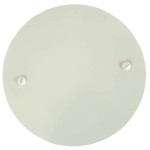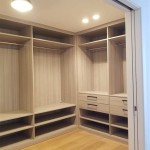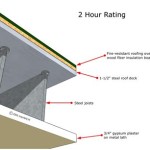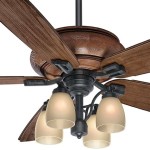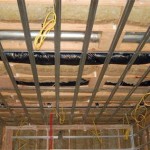Beams on a Flat Ceiling: Structural and Decorative Considerations
Beams on a flat ceiling, whether real or faux, can dramatically alter the look and feel of a room. They add architectural interest, define spaces, and enhance the overall aesthetic, making them a popular choice for homeowners seeking to elevate their interior design. This article explores the practical and stylistic considerations involved in incorporating beams on a flat ceiling.
Structural Considerations
While beams on a flat ceiling primarily serve a decorative purpose, it's essential to understand their potential structural implications. Real beams, constructed of wood or steel, are often used in traditional architecture to support the ceiling itself. They can be load-bearing, transferring weight from the roof to the walls, or non-load-bearing, acting purely as decorative elements. It's crucial to consult with a structural engineer before installing any beams, especially if they will be carrying weight or modifying the existing structure.
Installing real beams can be a complex and costly endeavor. They require significant planning, careful installation, and may necessitate modifications to the existing structure. Furthermore, real beams, particularly those made of wood, are susceptible to moisture damage and require regular maintenance. In contrast, faux beams are typically made of lighter materials, such as polyurethane or fiberglass, offering a more cost-effective and less disruptive installation process.
Aesthetic Considerations
Beams on a flat ceiling can be used to create a wide range of visual effects, from rustic charm to contemporary elegance. The choice of material, size, shape, and color plays a significant role in determining the overall aesthetic. Wood beams, often associated with traditional and rustic styles, offer a range of finishes, from natural wood to stained or painted options. Steel beams, favored for their modern appeal, can be left exposed or painted to match the surrounding décor.
The size and shape of the beams can also impact the overall feel. Large, heavy beams create a sense of grandeur and traditionalism, while smaller, more delicate beams can offer a lighter, more contemporary touch. The placement of the beams is equally important. Centered beams can create a sense of balance and symmetry, while off-center beams can introduce a playful, asymmetrical element.
Decorative Considerations
Beams on a flat ceiling provide ample opportunities for decorative accents. Recessed lighting can be integrated into the beams, providing both functional illumination and visual interest. The space between the beams can be used to showcase decorative elements such as artwork, mirrors, or sconces. Alternatively, the beams themselves can be adorned with decorative details, such as carved accents or painted details. These decorative touches can enhance the visual appeal of the beams and contribute to the overall design aesthetic of the room.
When selecting decorative elements, consider the style of the room and the overall design scheme. A rustic room might benefit from natural wood beams with exposed knots and imperfections, while a contemporary space could be enhanced by sleek, minimalist beams painted in a neutral color. The focus should be on creating a cohesive and aesthetically pleasing space that complements the existing design elements.

Love This Look Exposed Wood Ceiling Beams The Inspired Room

Diy Wood Beams And Install With Shorter Ceilings Grace Oaks Designs

Flat Wood Beam Ceiling

Flat Ceilings With Beams Google Search

New Faux Beams In Our Dining Room Cost And Details Nesting With Grace

Image Result For Wood Beams On Flat Ceiling

Love This Look Exposed Wood Ceiling Beams The Inspired Room

Exposed Beams Add Architectural Detail

Ceiling Makeover How To Expose Wood Beams Jaime Costiglio

Installing Beams On A Ceiling Which Direction Barron Designs


